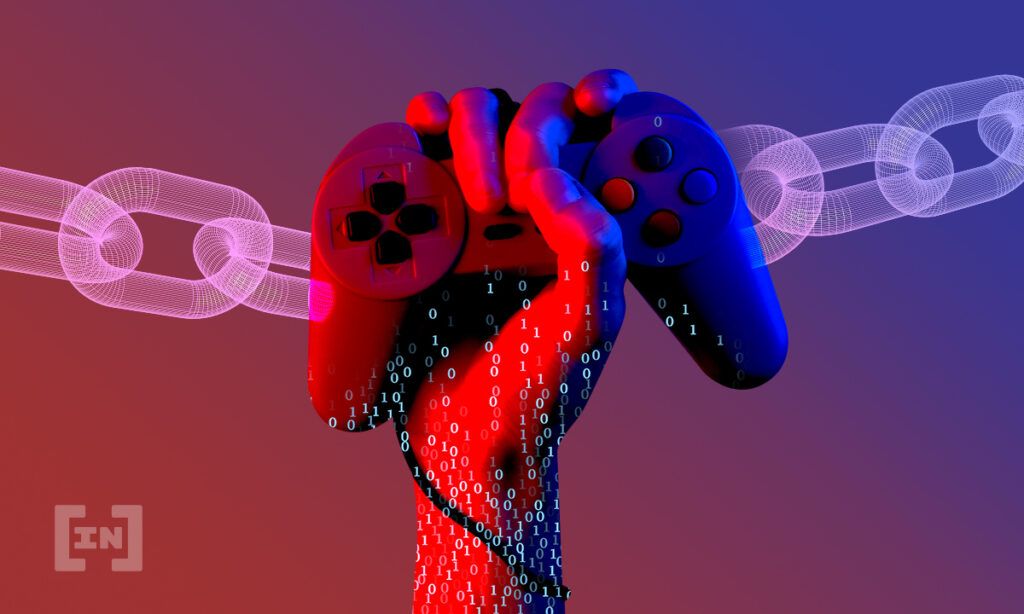
Play-to-Earn Needs More Innovation – BeInCrypto
- Analysis
- May 15, 2022
Guest Op-Ed
Updated by Nicole Buckler
Money is not a motivation to play games – it’s about having fun. Financial incentives and addictive gameplay need to strike a balance, says Michael Rubinelli, chief gaming officer at WAX Studios.
In play-to-earn gaming, the name says it all. This new entertainment model allows users to earn a tangible income while playing. Blockchain, cryptocurrencies and NFTs make it possible.
Players will enjoy an interactive experience and earn a certain amount of native assets at the same time. These assets are mostly decentralized and can be exchanged for money by the players outside the platform.
True, it is precisely this concept that is the idea of play-to-earn, but there are still some snags. Many of these games are not very innovative and very simple.
In addition, many of these games have an economic problem: the income models of most games encourage users to withdraw their winnings from the platform. The system is thus permanently deprived of liquidity and it is not sustainable. In order for the game to really flourish, it is necessary to reinvest the earnings back into the ecosystem of the platform. For this, it is necessary to create an incentive.
Fortunately, new play-to-earn titles are already coming to the market with innovative ideas for gameplay and a balanced financial infrastructure.
Play-to-Earn: Challenges of Current Blockchain Games
Whether it’s card games, farming simulations or Pokémon-style battles, players have a wide range of options at their disposal. At least that’s the idea and there are many good approaches to this today. However, in order to appeal to a wider audience, entertainment and the functionality of play-to-Earn have to be brought together.
In the world of decentralized games, the first thing you encounter is the problem of infrastructure. Much of the current P2E landscape is based on Ethereum, which has significant limitations in terms of its scalability. When a player plays their favorite title, they don’t want to have to interrupt the game to wait for confirmation of a blockchain transaction – instant access is crucial. On Ethereum, however, a few minutes of waiting time is quite normal.

Play-to-Earn: Security
To solve Ethereum’s scalability problem, many platforms use “bridges” to other chains. These chains are called Layer 2 solutions and are connected to the Ethereum blockchain. Layer 2 solutions enable significantly faster transaction processes and then feed only the result of the process on the Ethereum blockchain. This model can be a successful strategy, but far too often the bridges between the two chains themselves are the weak point. They often become the target of hacker attacks.
With the recent attack on the Ronin Bridge, the hacker managed to steal over $ 620 million in assets from the popular P2E game Axie Infinity. This attack underscores the central vulnerability of layer 2 solutions and their bridges.
And even if a good solution for security and scalability is found, the problem of originality and the fun factor remains. If a platform does not provide entertainment, even a good infrastructure will not help. Far too many of the current P2E games are either too simple or generic copies of established gameplay formulas. Passionate gamers can not discover anything new in such games and therefore have no incentive to play them.
For gamers, it’s not about the financial, but about the originality and fun of the game. The play-to-earn players, on the other hand, can simply earn more through P2E in their countries of origin than in most entry-level jobs. For a real mass suitability, financial incentives and appealing gameplay must find a balance.

Requirements for mass suitability
First and foremost, there needs to be an influx of solid, creative and constantly evolving content in the upcoming P2E games. The developers need to look at what has traditionally worked in the most popular Web2 games and link these concepts with new ideas. Blockchain considerations should only come into play when a fundamentally appealing gaming experience has been worked out. Once the entertainment value is created, financial incentives can also be integrated.
But the entertainment value is not only based on the gaming experience, but also on the underlying infrastructure. The networks form the basis for these offers and must be able to process thousands of transactions per second. This is a basic prerequisite for the mass suitability of play-to-earn. There should be practically no maximum number of users. Everyone must be able to use the platform immediately, and transactions must be made without delay, otherwise it will not meet the requirements of modern players.
Play-to-Earn: Bridges
This kind of scalability should be available via a layer 1 blockchain. Layer 2 solutions have their justification, but these networks are often far too complicated for the average user. In addition, the bridges represent a potential vulnerability if they are not adequately secured. The already mentioned Ronin hack clearly showed this. With a fast and decentralized Layer 1 solution, there would be significantly fewer vulnerabilities that could be exploited by hackers. Players would have so much more certainty that their funds are safe.
The Ronin hack could not have happened with a sufficiently decentralized layer 1 solution. With only nine validators, the Ronin blockchain was not secure. The hacker only needed to gain control over 5 validators to gain control over the entire blockchain. A sufficiently decentralized blockchain with validators all over the world, on the other hand, makes such an attack much less likely. Networks can also guarantee the highest level of security and functionality if they still have their smart contracts checked by third parties. Any realistic possibility for such a hack would be excluded.
Important steps in the right direction
Fortunately, there are already various solutions: blockchains such as Solana, WAX and Binance smart chain all go their own way towards scalability and security. Each of these platforms forms the basis for better Web 3 services and thus for better P2E games.
While the technical foundations are becoming more and more robust, the quality defects still remain. But here, too, something is beginning to change. For example, the recently launched P2E game Blockchain Brawlers offers digital competitions in pro-wrestling style. Players compete against each other in exciting battles and can earn rewards.
However, the game is not a simple means of paying out winnings, but offers a variety of incentives for reinvesting assets and expanding player cadres, as well as accessories. Although the play-to-earn game is still in development, it promises varied experiences such as tournaments, PvP battles (designed by Richard Garfield, creator of Magic: The Gathering) and a variety of other game types.
The P2E industry needs exactly this kind of strategy and commitment to expand and attract new users.
For a promising project in the blockchain gaming sector, scalability, security and fun are ultimately equally fundamental. The continuous development of this area is not only good, but necessary. The developers of new games should both look at successful projects from the past, and collect enough innovative ideas to fully exploit the potential success of this promising industry.
About the author

Michael Rubinelli is the Chief Gaming Officer at WAX Studios. Rubinelli is a leader in the technology and gaming sector with more than 15 years of experience in corporate governance, product development and continuous revenue growth. He is known for his successes at top companies such as Disney, THQ and Electronic Arts. Michael Rubinelli has now turned his attention to play-to-earn games and spends most of his time expanding WAX Blockchain’s gaming division.
Disclaimer
All information contained on our website is researched to the best of our knowledge and belief. The journalistic articles are for general information purposes only. Any action taken by the reader on the basis of the information found on our website is done exclusively at his own risk.
